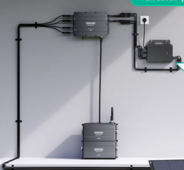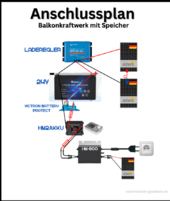Tarquinbob
New Member
Right now there's quite a few systems around that basically have a hub that connects to a proprietary battery and then connects to any standard micro grid tie inverter. This allows you to easily add battery storage to an existing system that uses micro inverters, but I can't see them ever paying for themselves because the batteries are too expensive. Does anyone know of a way of achieving the same system (please don't say hybrid inverter) if you already have a solar system which uses micro inverters and a DIY battery bank.
All of the plug and play systems that I mentioned in the title essentially work out at about €1000/kWh of storage, which you'd never make back in savings, so I'd like to find a DIY solar hub that can work with my existing 5kWh battery and Hoymiles inverter. Essentially all these systems are is a solar charger with a bypass feature that can direct power to the battery or the inverter and then eventually from the battery to the inverter when there's no sun.
I know that a hybrid inverter does pretty much the same thing but also includes an inverter, but for various reasons I'd prefer not to add a new inverter to my system and just add a hub to manage my battery.
All of the plug and play systems that I mentioned in the title essentially work out at about €1000/kWh of storage, which you'd never make back in savings, so I'd like to find a DIY solar hub that can work with my existing 5kWh battery and Hoymiles inverter. Essentially all these systems are is a solar charger with a bypass feature that can direct power to the battery or the inverter and then eventually from the battery to the inverter when there's no sun.
I know that a hybrid inverter does pretty much the same thing but also includes an inverter, but for various reasons I'd prefer not to add a new inverter to my system and just add a hub to manage my battery.







